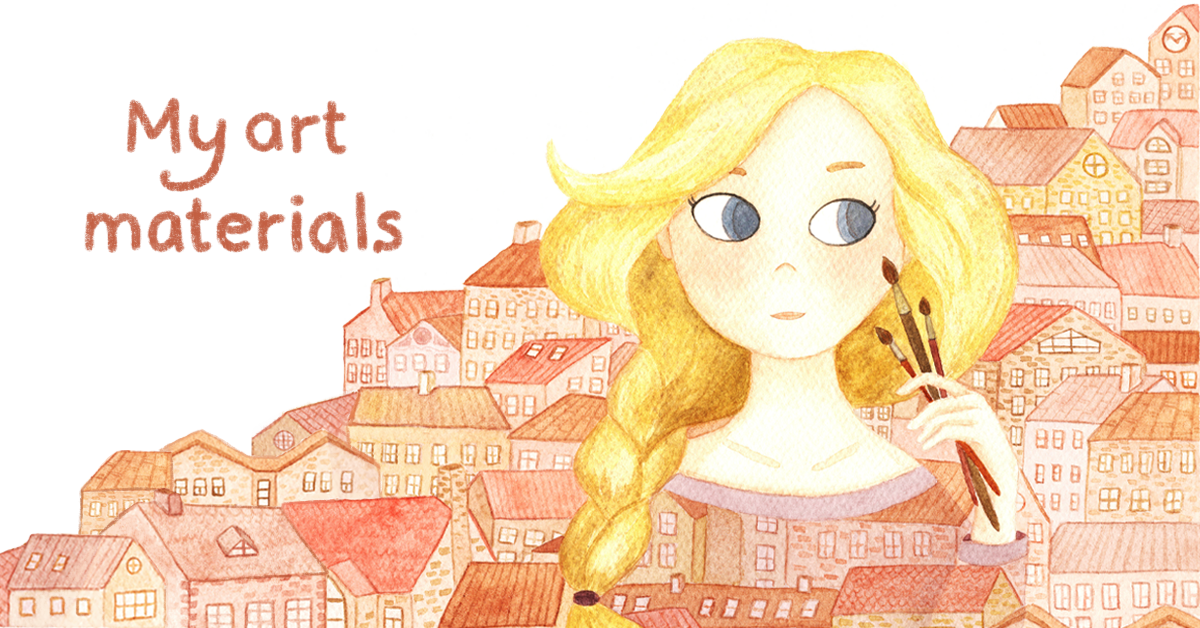
Shown art supplies are not sponsored

Pigments
I really like to know what exactly I’m painting with: understanding that will bring painting skills to a whole new level.
I make my own paints using pigments (1): one can make pigments from various things like soil, clay, charcoal, red bricks, eggshells (2) – as well as botanical pigments from red cabbage, bark, grass, etc. Personally I prefer earth pigments for their warm color and lightfastness. To obtain pigments one might need mortal and pestle (3), better if made from stone.
I must admit that sometimes I’m buying pigments in a shop, but I always make sure from where and how the pigment was collected, its chemical formula, etc.
To make watercolours from pigments which will “stick” to paper one would need to add a binder: I’m using gum arabic (4) dissolved in water. Pigment and binder are ready to be used as watecolours (5).
You can read more about pigments on my instagram page @follow.the.blackbird.
Watercolour paints
I have various watercolours in pans and in tubes (1): I usually use tubes for large background areas and pans for details. I often prefer to paint with granulating wateroclours: they give really cool textures.
For tubes and mixing colors I’m have ceramic and porcelain palettes (2): deep wells for large areas and small wells for details. Ceramic palettes like this racoon I make myself from air-dry clay. I often feel sorry to throw out lots of good pigment, so I many palettes with dried up pigments: just a bit of water with pipette and I can use them in other painting.
I don’t often use masking liquid (3), maybe only for small details like eyes. I apply it with silicon brush – otherwise your hair brush will be ruined.
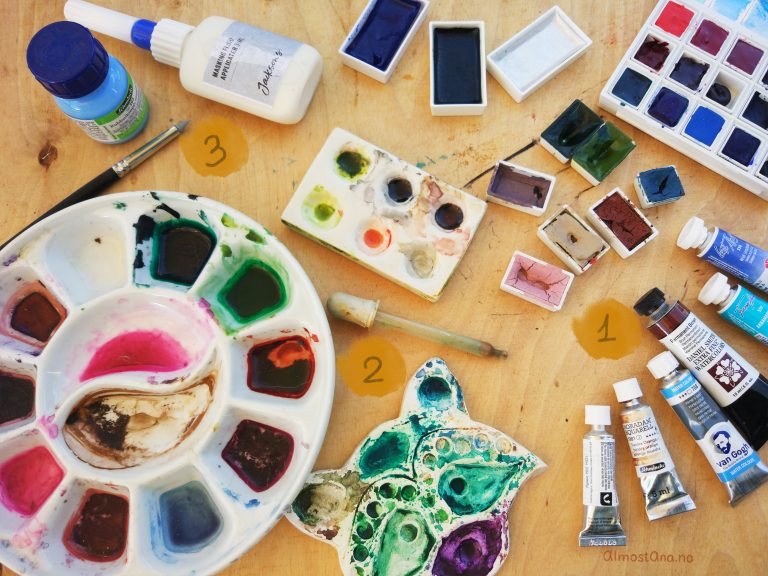
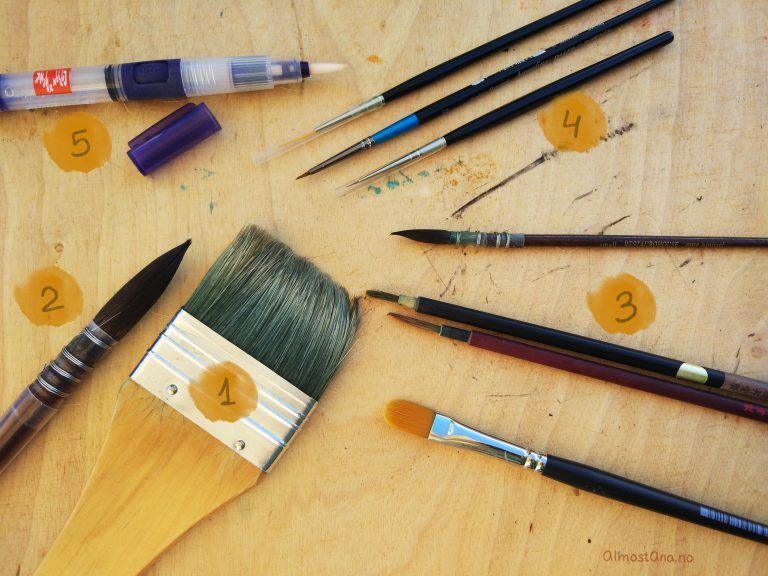
Brushes
I’m using various brushes, but preferably from synthetic hair (animal-friendly!).
Often when I colour background, I’m making all sheet wet with a large flat brush (1), and then add watercolour with a large mob brush (2). Depending on what I’m working on I’m choosing various brushes (3). For the details must-have are tiny brushes: some of them are so thin that hair is almost invisible (4). Brush-pen with water container (5) is a good solution for travels, but I usually use it when I paint many thin layers with the same colour: I’m filling watercolour water into it and it works just perfect.
Pencils
Simple and mechanical pencils (1) are typical choice for sketching. For linework, contours, final details I have black and white fineliners and pens (2). When I make contours on watercolour paper I sometimes choose color-erase pencils (3): they are easy to erase and they are not so visible as grey pencil. For textures like wood or fur watercolour pencils are great choice: just color area with them and slightly go over it with brush. For final layers I sometimes add permanent colored pencils (5): they are quite vivid even over paint unlike normal pencils.
I have various erasers (6) from soft to hard, and my recent favorite is eraser in a pencil: perfect for tiny corrections. Except sharpeners one can use a sand paper (7) for pencil leads: very economical solution.
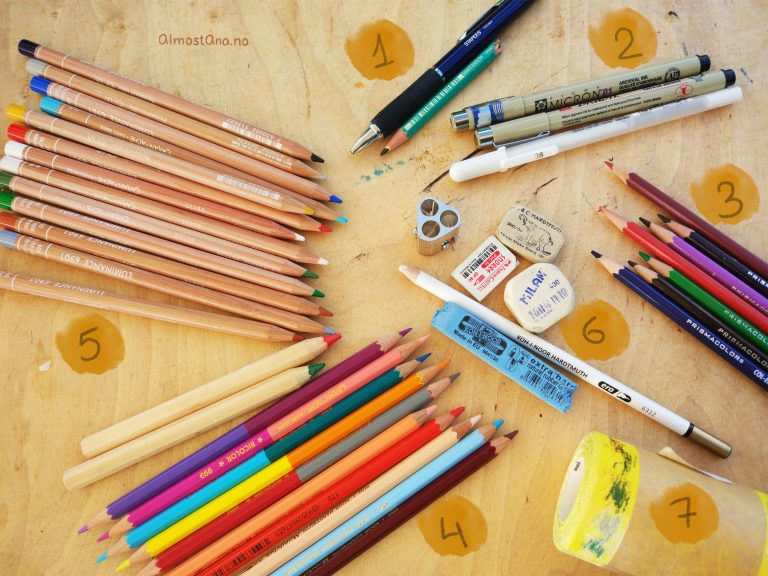
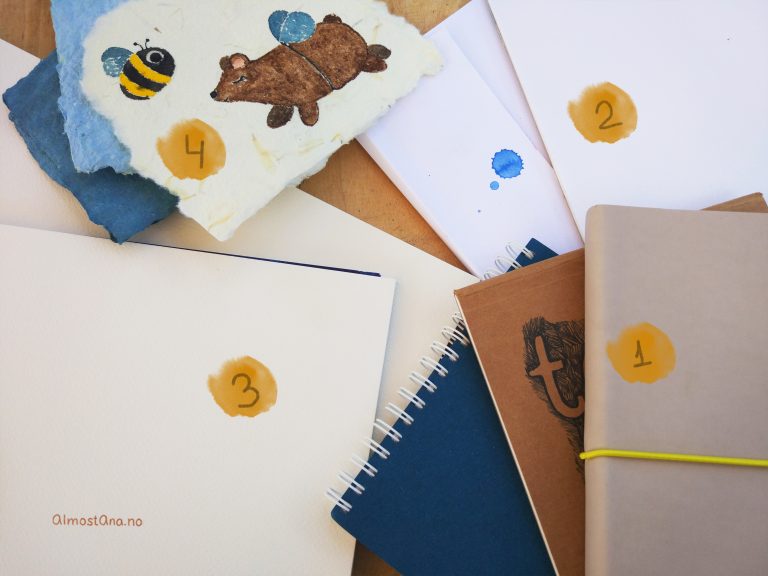
Paper
For sketching I use A5 notebooks (1), but often I sketch on loose paper sheets and yellow sticky notes. After sketch is done, I trace the contours on watercolour paper using a lightpad. I prefer cold-pressed paper of 300gsm (2): it allows to keep contours and details while paints have nice watercolourish stains. If I work with wet-on-wet I choose rough cold-pressed paper, and if the picture includes detailed linework I would choose smooth hot-pressed paper to allow clean lines.
After I tried cotton paper (3), I tend to use this one instead. It’s quite prissy, but it doesn’t dry up as fast as normal paper, thus unwanted stains don’t appear.
Making recycled paper (4) is fun and quite easy: you can make it different colours, play with sizing, add petals and seeds into it.
